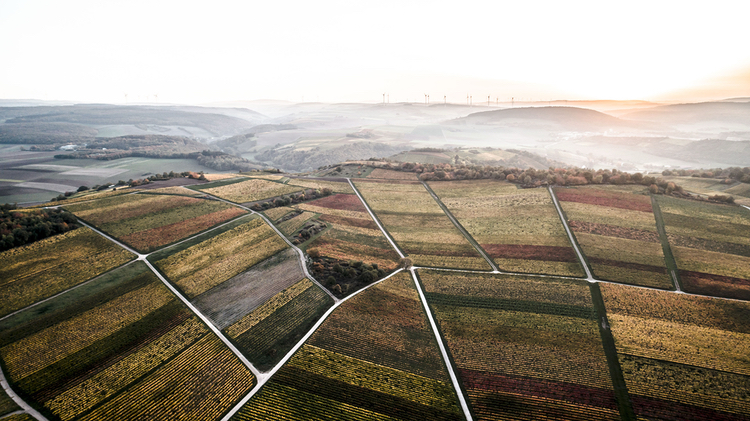How is German Riesling like Southern iced tea? It’s usually sweet, but you can get it unsweet. And it’s not that easy to figure this all out.
What do you think?
German Riesling has a reputation as a sweet wine, but dry/trocken Riesling can be delicious. What do you think? Do you have a favorite?
Actually, the sweet/dry reputation has sorted itself out over time, at least among wine nerds. Most of us recognize the issues at play.
First, Germany – particularly in its most sought-after wine regions along the Rhine and Mosel river valleys – enjoys a European continental climate with four distinct seasons that include cold winters and cool summers. Not all wine grapes thrive there, and many varieties struggle. Riesling, however, thrives in this climate, particularly in desirable vineyard locations high on south- or west-facing slopes that get abundant sunlight. This is why Riesling has become so popular there, and German wine makers have had nearly 700 years to master it.
But here’s the catch: Riesling, particularly when it’s grown in a cool climate, can make a fiercely acidic wine, and that goes double when frost falls before full ripeness, forcing early harvest before the grapes have reached full, juicy ripeness.
It didn’t take the region’s wine makers long to learn that achieving a balance between bracing acidity and gentle fruit sweetness would yield a much more interesting and enjoyable wine than they could achieve in fully dry wines. Over time, sweetness became a goal in itself, and Germany’s wine classification system evolved to celebrate sweeter, well-balanced wines in place of bone-dry palate scorchers.
But the more that classification system evolved, the more complicated it appeared to outsiders, the more German wines suffered a reputation as difficult to understand. Considering this difficulty, and a sweet-tart style different from popular French and Italian dry table wines, it shouldn’t surprise us that German wine remains a hard sell to all but its most devoted partisans.
Happily, all this is gradually changing. German wine makers have mastered approaches that make Trocken (“dry”) and Halbtrocken (“half-dry”) Rieslings more balanced, complex, and easy to enjoy. And modern revisions to the German wine classification system, while still as complex as you’d expect from the language that gave us the word schadenfreude, are said to be more clearly organized.
After centuries of focusing on ripeness/sweetness as the primary goal, Germany’s latest wine law revisions in 2021 make the point that “The smaller the origin, the higher the quality,” and classify wines largely by terroir/geographical origin rather than ripeness.
It takes a long time to overcome a reputation, though, and many German producers solve the perceived problem with a simple expedient: The front label is as simple as can be. All the small print goes around to the back label.
This week’s featured wine, for example – Wagner-Stempel 2022 Rheinhessen Dry Riesling Trocken, contains just four simple points on the front label: The winery name: Wagner Stempel. The grape: Riesling. The vintage: 2022. And the broad region where the grapes were grown: Rheinhessen.
For everything else you need to know, look at the mass of smallish type on the back. Here you’ll learn, among other things, that this Rhine Valley Riesling is rated Trocken, which means it’s essentially dry, although with a bit of residual sweetness left for balance. You’ll also learn the bewildering but important fact that this is a Deutsche Riesling Trocken VDP-Gutswein, a 21st-century rating that establishes its place in the terroir hierarchy.
This is an excellent dry Riesling, demonstrating modern Germany’s mastery of this style. Because it cost $30 at my local wine shop and a $25 average U.S. retail price on Wine-Searcher.com, my detailed tasting report must remain behind our subscription paywall.
Since I buy all the wines I review at retail and do not accept wine samples or other gratuities from the industry, I count on the support of paid subscribers to help cover the cost of the wines I review. If you haven’t become a full subscriber yet, I’d love to have your support. Click here for information on our paid-tier edition. Our free-to-all edition featuring a quality wine for $20 or less will return in its biweekly cycle next week.

Support The 30 Second Wine Advisor with your paid-tier subscription. For $5 per month or $50 for a year (a 17% saving), you’ll receive additional wine notes funded by your subscriptions, gain quick direct access through Substack for wine-related questions, and gain my real appreciation for your support.





